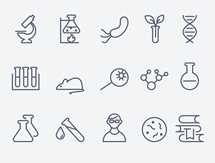University program seeks to connect small-town students with potential science careers
 When University of Wisconsin researchers study stem cells, they typically seek to create skin and organs. This summer, their goal was to create scientists.
When University of Wisconsin researchers study stem cells, they typically seek to create skin and organs. This summer, their goal was to create scientists.
Some 22 small-town high school students and teachers joined UW-Madison students and researchers this month in donning lab coats and blue plastic gloves to experiment with live human stem cells, the Wisconsin State Journal reported.
The four-day camp on campus hosted by the Morgridge Institute for Research was part of a program that encourages science careers and aims to give rural students chances they wouldn’t ordinarily get.
Next page: How students have responded to the science program
The Wisconsin Rural Opportunities foundation helps fund the program. Its executive director, Marcy Heim, said that as rural populations shrink, rural high schools struggle to staff their science departments.
“If you lose your high school in rural Wisconsin, you’ve really lost it,” Heim said. “The high school is really the hub of vitality. . Part of what keeps those high schools strong is having a strong curriculum.”
While the camp exposes students to groundbreaking research, event coordinator Dan Murphy said a main goal is to paint a realistic picture of a science career.
“If they get that, they’ll be really curious and inspired,” Murphy said, “then it will all flow from there.”
In a lecture, Bill Murphy, a co-director of the campus stem cell center, outlined recent advances, many of which had UW-Madison origins. He explained how researchers turn stem cells into brain cells in order to model diseases, and how doctors will soon be able to replace missing or cancerous jaw bones with bone marrow grown from stem cells.
Prentice High School senior Jesse Isaacson experimented with liquid nitrogen under the guidance of college-aged interns, freezing whole bananas and turning soft, fresh flowers hard and crunchable. When he saw some of the researchers dipping more bananas into the substance during a break, he joked:
“You’re just having fun now. You guys like this too much.”
Copyright 2015 and distributed by the Associated Press.
- Friday 5: Universal Design for Learning - April 19, 2024
- Educators love their edtech, but want more training - April 18, 2024
- Friday 5: College and career readiness - April 12, 2024

